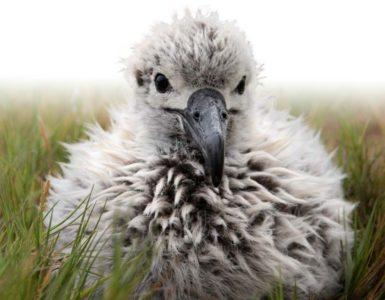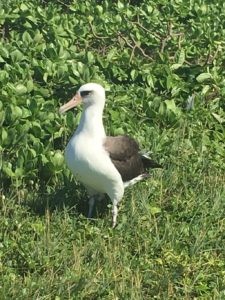 Pacific Rim Conservation in partnership with Kilauea Point National Wildlife Refuge are looking for enthusiastic and motivated volunteers to assist with seabird surveys and habitat maintenance of the nearly complete predator exclusion fence. Volunteers will work alongside PRC and the USFWS to restore native bird habitat and survey seabirds in areas of the refuge where few members of the public get to see. You will be working towards one of the larger ecosystem restoration projects underway within Hawaii and will get to see a variety of nesting seabird species up close while under the supervision of professional wildlife biologists.
Pacific Rim Conservation in partnership with Kilauea Point National Wildlife Refuge are looking for enthusiastic and motivated volunteers to assist with seabird surveys and habitat maintenance of the nearly complete predator exclusion fence. Volunteers will work alongside PRC and the USFWS to restore native bird habitat and survey seabirds in areas of the refuge where few members of the public get to see. You will be working towards one of the larger ecosystem restoration projects underway within Hawaii and will get to see a variety of nesting seabird species up close while under the supervision of professional wildlife biologists.
Application: https://forms.gle/j3ZSJzK8WwGMJn6F9
Position requirements:
- Time period: June- December 2023 with a minimum commitment of four volunteer sessions.
- Frequency: Two options- either once per month, or every two weeks. Precise day can be determined, but will need to be M-Fri during regular staff hours since you will be working alongside us.
- Length of shift: 4-6 hour time for each visit during regular business hours. Exceptions are for evening auditory surveys.
- Physical requirements: Volunteers will be expected to be hiking and walking outside in the sun for 4-6 hours each shift. You are required to be able to lift 20 pounds and be able to safely walk over uneven, hilly and muddy terrain.
- Volunteers must be US citizens or permanent residents and will be required to attend a breif orientation with the US Fish and Wildlife Service prior to commencing the work.
Duties:
Habitat maintenance: Each four-hour shift will require 2-3 hours of habitat maintenance. This includes weed whacking along fence edges, hand pulling weeds in seabird nesting areas and occasionally out-planting native plants. Training will be provided on how to use a weed whacker and all appropriate safety equipment will also be provided.
Seabird monitoring: Each shift will have 1-2 hours of seabird monitoring and surveys. These include:
- Night-time Auditory Survey in Nihoku – Volunteers can accompany us for our night survey to listen for native seabirds calling, as well as observe wildlife with binoculars and night vision goggles. Surveys occur every two weeks
- Nihoku Burrow Checks – assisting with opening artificial burrows to check for seabird presence and/or activity, with the chance of seeing Newell’s Shearwaters and Hawaiian Petrels.
- Wedge-tailed shearwater nest monitoring – assist with identifying active shearwater burrows, marking burrows with stakes and checking the status of burrows.

 Pacific Rim Conservation is seeking a wildlife veterinarian to complement our small, dynamic team who are working on cutting edge conservation of endemic and endangered birds in Hawaii and the Pacific region. We are translocating and captive rearing six species of seabirds to create new breeding colonies that are resilient to sea level rise and protected from non-native predators. With up to 140 individuals of four bird species in care at any one time, our veterinarian will be responsible for providing comprehensive veterinary care and assisting with feeding and otherwise caring for translocated chicks, sometimes in remote field conditions. We are interested in an enthusiastic, adventurous veterinarian who is open to new challenges, loves to travel, and is willing to assist with a variety of avicultural activities. For more information on the project, visit
Pacific Rim Conservation is seeking a wildlife veterinarian to complement our small, dynamic team who are working on cutting edge conservation of endemic and endangered birds in Hawaii and the Pacific region. We are translocating and captive rearing six species of seabirds to create new breeding colonies that are resilient to sea level rise and protected from non-native predators. With up to 140 individuals of four bird species in care at any one time, our veterinarian will be responsible for providing comprehensive veterinary care and assisting with feeding and otherwise caring for translocated chicks, sometimes in remote field conditions. We are interested in an enthusiastic, adventurous veterinarian who is open to new challenges, loves to travel, and is willing to assist with a variety of avicultural activities. For more information on the project, visit 
